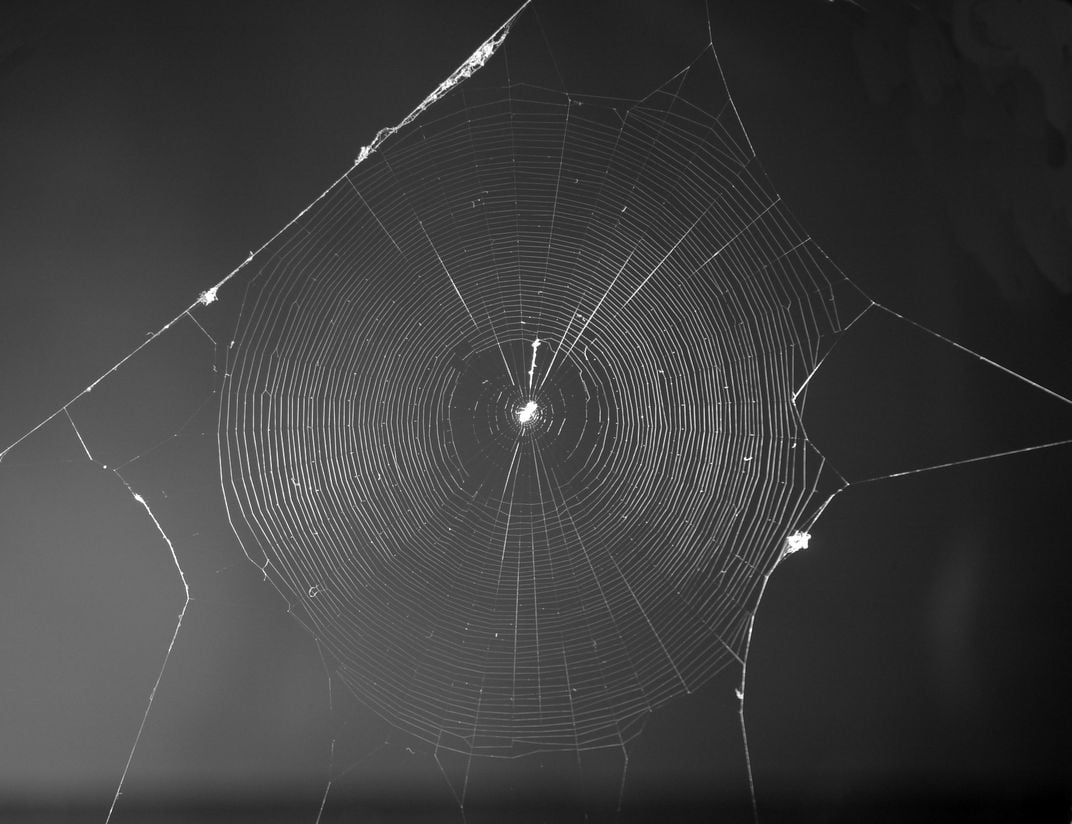Parasitic Wasps Turn Spiders Into Zombie Weavers
Arachnids injected with a potent neurotoxin are forced to create shiny new web cradles for wasp larvae
/https://tf-cmsv2-smithsonianmag-media.s3.amazonaws.com/filer/12/d6/12d6c3c4-3353-4b6c-a806-caaebcfb46de/final-instar.jpg)
Parasites are masters of manipulation, often exerting chemical mind control over their victims and frequently causing their hapless host’s demise. In Japan, for instance, female Reclinervellus nielseni wasps are known to snatch orb-weaving spiders, lay eggs on the arachnids and fly away. The spiders continue with life as usual—until the eggs hatch and the wasp larvae emerge.
A larva injects its host with potent venom that zombifies the spider by hijacking its nervous system. The tyrannical young wasp then forces the eight-legged zombie to get to work building the perfect nest. Once the project is complete, the larva eats its complacent seamstress.
Now, a closer look at this Game of Thrones-worthy relationship shows how the zombie spider changes its web weaving to please its larval host. According to a team of Japanese scientists, those bespoke creations are both stronger and more obvious—factors that likely reduce damage from collisions with flying insects or falling leaves and ultimately increase the larvae's odds of survival.
Keizo Takasuka, a postdoctoral researcher in behavioral ecology at Kobe University in Japan, became intrigued with the wasp-spider dynamic when visiting local temples and observing orb-weaving spiders. As an arachnid expert, Takasuka knew that orb-weavers create two kinds of webs: a more ornate, complex version used for catching prey and another called a “resting web” used as a temporary hangout while the spider is molting.
Wasp-hijacked spiders create webs that resemble that latter category, but Takasuka wondered whether that was simply a coincidence. The wasp’s venom could be tapping into the spider’s resting web blueprints and compelling it to follow those instructions, but it was also possible that the spider was simply creating a web for the larva willy-nilly and it only happened to resemble the resting web.
To find out, Takasuka collected 20 healthy spiders and 10 parasitized ones from shrines in two cities. He and his colleagues took high-definition video and photos of the spiders as they built their webs. They also collected pieces of the completed webs and used a tensile machine to measure the force needed to break the notoriously strong strands.
Image analysis revealed no significant different between the architecture of the parasitized and unparasitized nests, and both groups of spiders followed similar behavioral patterns during construction. A closer look at the webs’ materials, however, uncovered some key differences.

Unlike the resting webs, larvae webs glowed brightly when viewed in ultraviolet light, the team reports today in the Journal of Experimental Biology. The researchers think the extra lighting deters insects from accidentally colliding with the larva’s sanctuary. The threads the spiders used to construct the larvae webs were also significantly thicker and tougher, requiring 2.7 to 40 times the breaking force to snap than the threads from a normal web. When the researchers dissected the threads, however, they found no major structural difference in the strands. This means that the larvae are likely forcing the spiders to reinforce their normal threads with added layers of silk rather than having them produce strands of thicker silk.
The researchers suspect that the wasp larvae inject their hosts with chemicals that mimic hormones the spiders produce naturally to trigger the resting web-building behavior. Slight tweaks to the formula could force the spider to obsessively go over the same spots to reinforce the web and add the extra UV dazzle.
The process really deviates from the norm, however, when the spider completes the lovingly constructed nest. Inevitably, that now useless arachnid ambles into the center of the web and sits inert, patiently waiting for its larva master to pay it the ultimate compliment for all of its hard work: eating it for dinner.
/https://tf-cmsv2-smithsonianmag-media.s3.amazonaws.com/accounts/headshot/Rachel-Nuwer-240.jpg)
/https://tf-cmsv2-smithsonianmag-media.s3.amazonaws.com/accounts/headshot/Rachel-Nuwer-240.jpg)